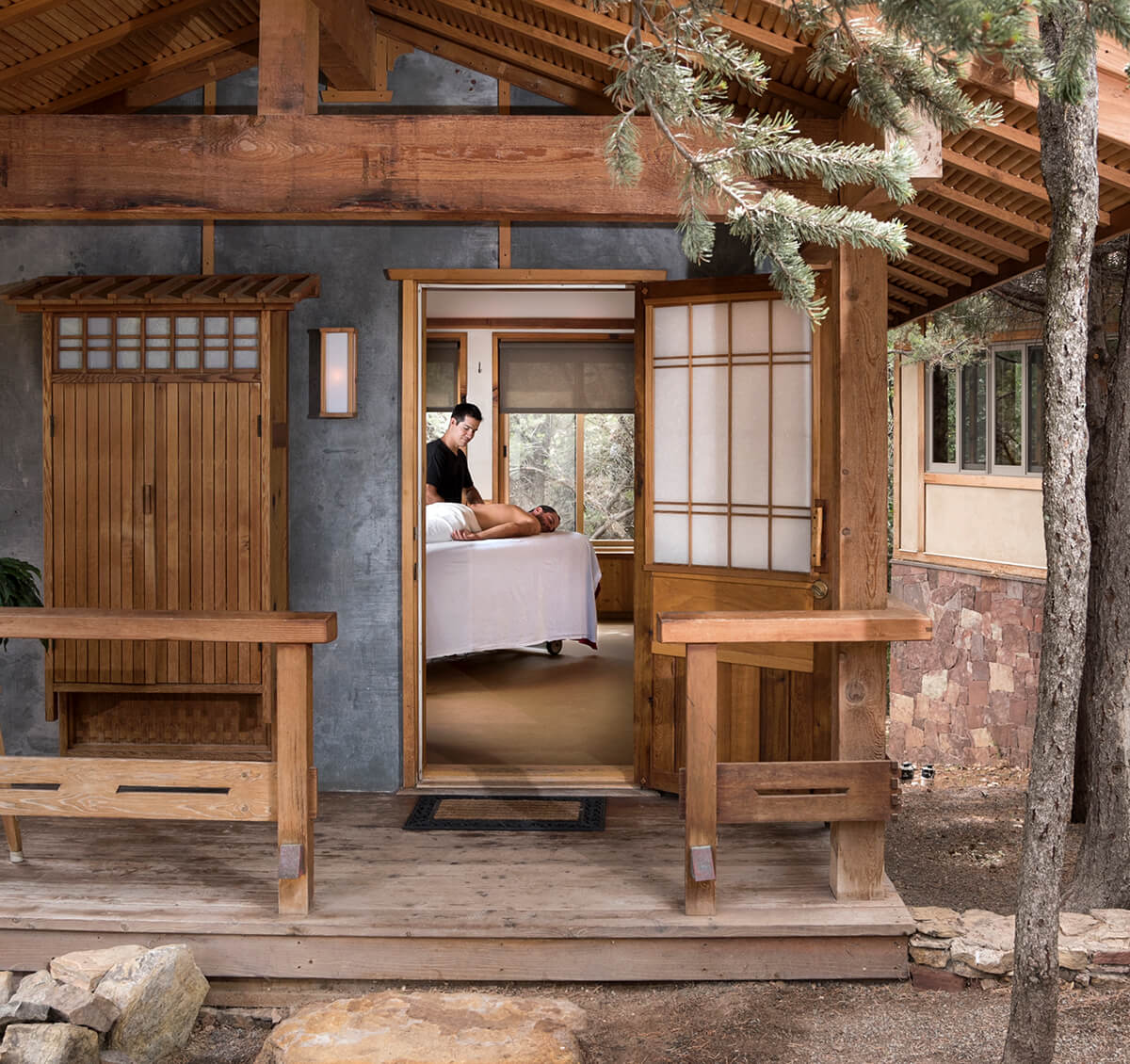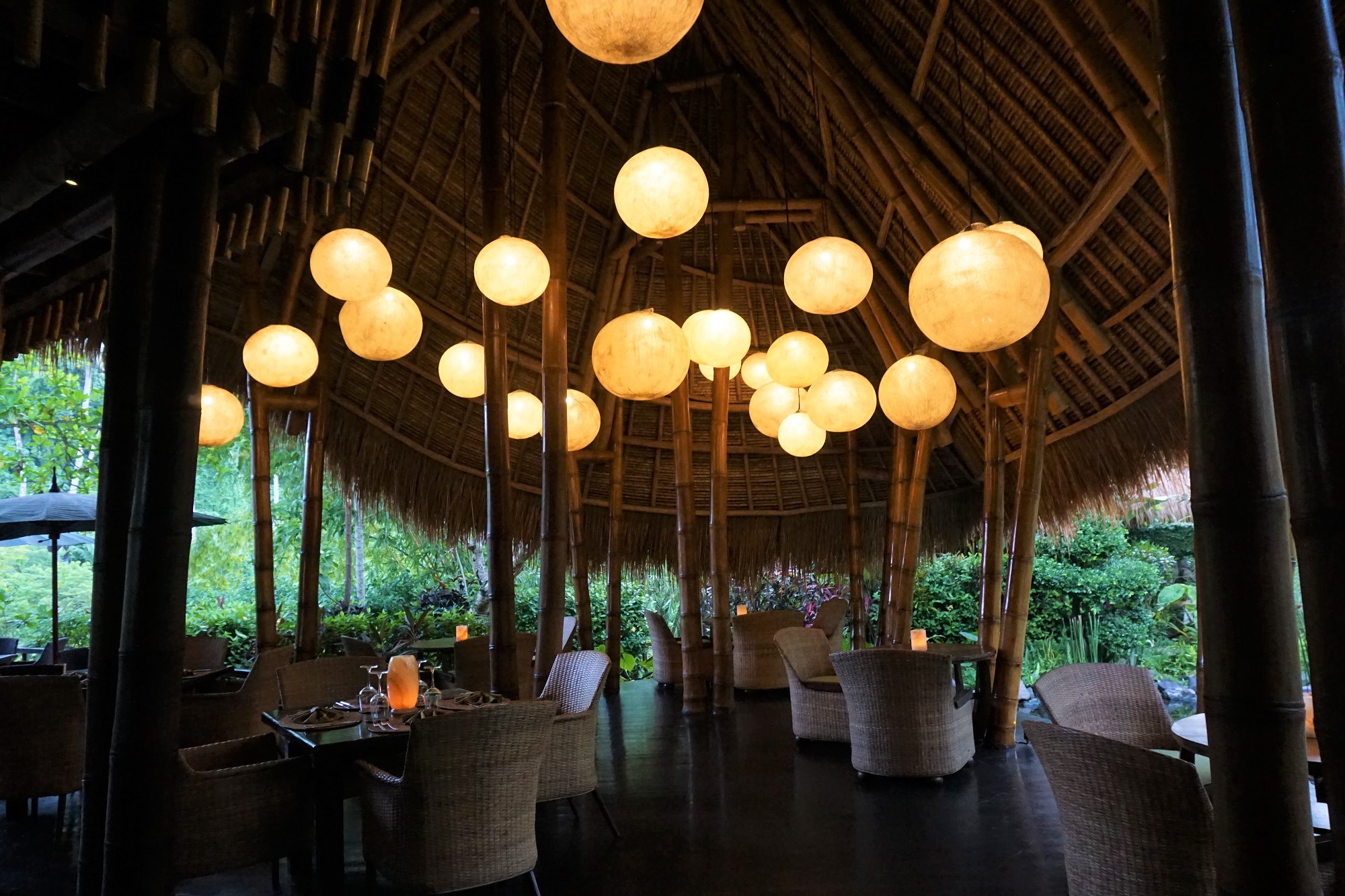
Does Santa Fe’s world-famous Japanese spa live up to the hype?
An inside look at Ten Thousand Waves.
As someone who grew up in New Mexico, Ten Thousand Waves had always seemed almost mythically luxurious and exclusive to me. It’s a Japanese spa set in the foothills of northeastern Santa Fe—a gorgeous area peppered with expensive adobe houses just 15 minutes or so from Santa Fe Plaza. I first heard about the spa from my older sister, who visited the communal soaking tubs with a friend in the late ’90s. She loved her experience and brought me back a spa menu as a souvenir.
At the time, the spa’s signature service was a nightingale facial, which used purified nightingale droppings and cost a small fortune. At least, it seemed like a small fortune to me. In reality, it was probably around $150 or so, which isn’t a lot compared to facials one might get in New York or Los Angeles today, but seemed astronomical to a high school sophomore living in Albuquerque, New Mexico in 1999. (The glamour of bird poop was undeniable back then.)
At the time, the spa’s signature service was a nightingale facial, which used purified nightingale droppings and cost a small fortune.
As is often the way with such things, I never made it to Ten Thousand Waves while I was actually living in New Mexico. I went to Santa Fe from time to time, but the spa was never on my agenda, despite the fact that I had heard it was one of the top spas in America. I had even seen it mentioned in one of the fancy travel magazines I bought from time to time. Still, it wasn’t until this year, when taking my best friend, Jen, home with me to New Mexico, that I finally decided to visit the spa myself.
We waited until we were already in New Mexico to make our reservations—about a week out—which I had assumed would be enough time, but ended up limiting our choices significantly. Our bad! I had been dreaming about the spa’s famous four-hands massage since I was a teenager and first read about it in the menu my sister brought me, but it books up weeks in advance, so I signed up for an 80-minute hot stone massage instead, while Jen got the 80-minute “nose to toes” treatment—a combination scrub and full-body massage.

The day of our treatments, we made sure to arrive a few hours early in order to take full advantage of the communal soaking tubs, saunas, manicured grounds, and relaxing meditation room (Ten Thousand Waves also offers private soaking areas and tubs for an additional fee). The spa itself is lovely and based on a traditional Japanese onsen; it’s open to the sky and surrounded by the natural flora and fauna of the high desert.
Upon our arrival, we were given robes and directed to the locker rooms to bathe and change before exploring the grounds and entering the tubs. As someone who has traveled in Japan and takes great pleasure in the act of bathing at an onsen, I must admit that I was disappointed by the locker rooms; instead of the low stools set in front of mirrors with buckets and hoses that you find in onsens across Japan, this was just a standard locker room with open showers.
The spa itself is lovely and based on a traditional Japanese onsen; it’s open to the sky and surrounded by the natural flora and fauna of the high desert.
Was it well-executed? Yes—but it didn’t have that very specific type of bathing that you experience in a traditional onsen: luxurious and indulgent, where you sit and take your time. In other words, completely unlike the way we bathe in America. In Japan, I could easily spend an hour or more in an onsen slowly washing and rinsing myself.
Santa Fe is a desert in perpetual drought, so you might think that the absence of a traditional onsen bathing experience is an effort to save water, but a shower uses way more water than a bucket and hose. Perhaps they just didn’t think Americans, (or New Mexicans) would understand or appreciate the experience, but why not at least have showers and a small, traditional bathing area in the same space? If you’re going to claim to be a traditional Japanese onsen, then you really shouldn’t just provide traditional Western stand-up showers and call it a day.

Once we were washed and changed, Jen and I explored the various tubs and saunas. The area around the tubs is beautifully manicured in a Japanese style, and the trees overarching the smaller tubs offer a lovely bit of shade while local birds sing and flit about. Use of the tubs is free with the purchase of a spa treatment, but you can also buy a day pass for the tubs alone.
The day we were there—a Saturday in late April—the spa was busy, but not overcrowded, and people were generally respectful and quiet. The main tub had a waterfall feature that people took turns soaking under and there was a women-only tub that Jen enjoyed, although she said it was more crowded than the others.
The only real disturbances came from the maintenance staff, who frequently came into the saunas or walked around the tubs to check on this and that. These disturbances were brief, but included slammed doors, full volume conversations, and hurried movement from place to place. And while it’s understandable that a fully-clothed person would want to spend as little time as possible in a hot sauna, these disturbances were jarring, which was disappointing given the otherwise lovely tranquility of the place.
The treatment rooms were standard—clean, cozy, and not too cool.
The treatment rooms were standard—clean, cozy, and not too cool. Jen told me later that loud maintenance work had been going on just outside her room for the first 15 minutes or so of her treatment, but said that once the people moved away and calm was restored, she was able to relax into her treatment.
The masseur didn’t use as much pressure as Jen wanted her to, saying that the massage was not meant to work out knots, but to relax the body. Neither of us have ever been in a situation where the masseur didn’t moderate their pressure to suit our preferences and it definitely took Jen aback, but the woman was very nice and rather than push her on it, Jen decided to just lay back and try to enjoy herself. And she did enjoy herself—just not as much as she probably would have if the masseur had done what she asked.

My own hot stone massage was good, but not great. I had never had a hot stone massage before and I loved the weight of the stones in my hands and on top of my body as the masseur went about her work. The pressure was good, but I too was dealing with some jarring noises; throughout the treatment, as she removed stones from my body, I would hear them drop loudly onto the counter just behind my head, shocking me out of the foggy haze of relaxation she had just rubbed me into. She also frequently ran the water at full blast into a very deep sink, which had a similarly disruptive effect. (Maybe that’s where the Ten Thousand Waves name comes from….)
After our treatments, Jen and I sat quietly for a few minutes soaking our feet before once again showering and changing into our street clothes. Ten Thousand Waves has a restaurant, Izanami, that’s supposed to be quite good, but given that our experience at the spa had been hit and miss, we decided to skip it and head back into town for dinner. (After all, Santa Fe’s culinary scene is nothing to sniff at.)
All in all, the trip to Ten Thousand Waves was nice, but not amazing. If you’re in the area and you’ve got time, it’s definitely worth checking out—the grounds are lovely and the pools are very relaxing—but I’m not sure it should really be considered a “destination spa.” It’s certainly one of the nicest and most luxurious spas in New Mexico, and may well have once been one of the best spas in the country, but it misses the mark on some of the finer points of execution. At the very least, that spa menu is no longer souvenir-worthy.

